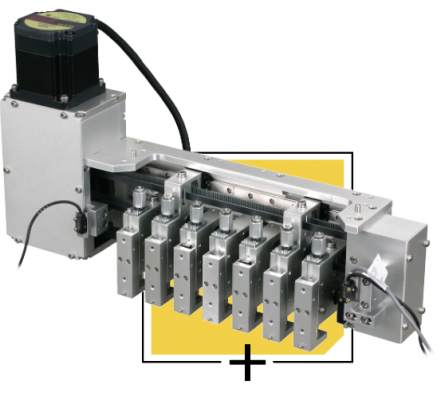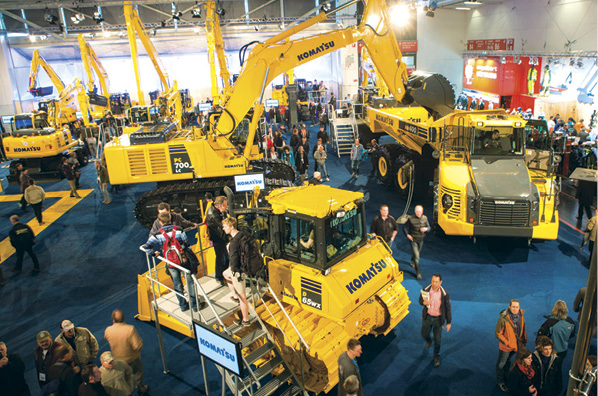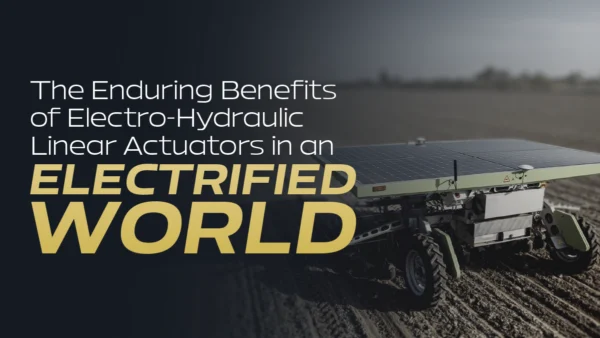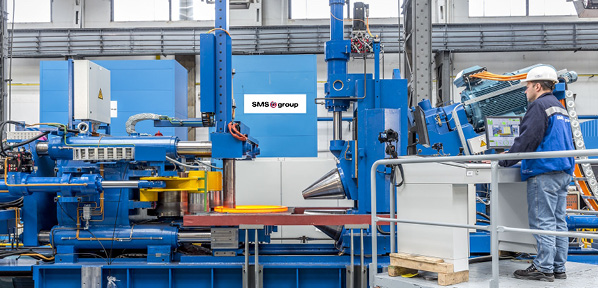Mounting Requirements of Hydraulic Swivels
There’s more to the mounting requirements of a hydraulic swivel than meets the eye. Mounting rigidity and swivel torque are important design considerations, and it is important to understand how they interact with each other.
SWIVEL TORQUE
The resistance to turning is what must be overcome by the torque of the hydraulic swivel. There are a few general concepts that can be used to judge the optimal hydraulic swivel torque. There is a “breakaway” torque value when first starting the movement from a static position. After the rotation has begun, the dynamic torque value should be lower. You might be surprised at the number of factors that create resistance to turning. Seal diameter, geometry, material, the number of seals, and the pressure within the circuit all contribute to the resistance to turning.
Each permutation of pressure and return flow creates a different torque value. Therefore, steady-state torque isn’t the only concern when dealing with the mounting requirements of a hydraulic swivel. The seals within the swivel have both static and dynamic friction. The static friction is much higher than the dynamic friction, and so the static resistance to rotation in a hydraulic swivel will be much higher than the dynamic resistance to rotation.
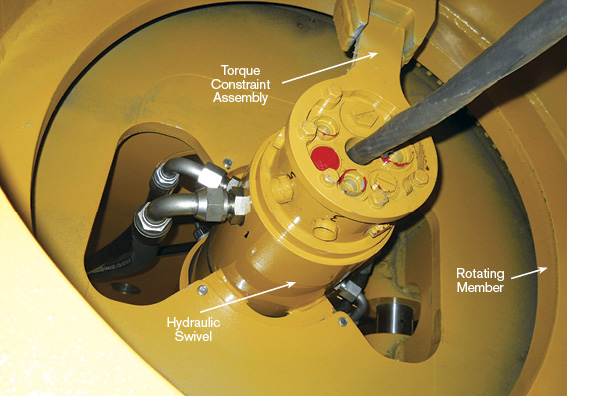
MOUNTING RIGIDITY
Understanding the difference between static and dynamic friction is very important. It is the cause of chatter that develops within an assembly that contains a hydraulic swivel.
The “torque constraint assembly” (typically a weldment that cradles the torque arm of the swivel) is the mechanical link between the rotating member and the hydraulic swivel (See image above).
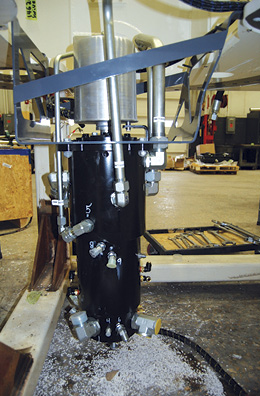 As the rotating member begins to turn based on operator inputs, the torque constraint assembly engages the swivel and begins to put rotational force on it. High-static friction within the swivel creates a large resistance to turning, and the torque constraint assembly flexes slightly due to the resistance. As the force continues to increase, the swivel transitions from static to dynamic friction and begins to rotate. The reduction in resistance causes the swivel to snap forward ahead of the rotating member due to the torque constraint assembly acting like a slingshot. With the swivel ahead of the torque constraint assembly, it pauses for a brief moment. The torque constraint catches up and engages the swivel, repeating the sequence again.
As the rotating member begins to turn based on operator inputs, the torque constraint assembly engages the swivel and begins to put rotational force on it. High-static friction within the swivel creates a large resistance to turning, and the torque constraint assembly flexes slightly due to the resistance. As the force continues to increase, the swivel transitions from static to dynamic friction and begins to rotate. The reduction in resistance causes the swivel to snap forward ahead of the rotating member due to the torque constraint assembly acting like a slingshot. With the swivel ahead of the torque constraint assembly, it pauses for a brief moment. The torque constraint catches up and engages the swivel, repeating the sequence again.
The whole process happens many times per second (100 Hz potentially) depending on the natural frequency of the torque constraint assembly. This frequency is usually within the audible range of humans, so when it occurs, it makes a large noise that can be heard and felt. It is not the swivel that is chattering; it is the torque constraint assembly and mounting that are the source of the noise.
There are several best practices that provide the optimal mounting and torque-restraint features and reduce the risk of several potential failure modes, including the elimination or prevention of hydraulic swivel chatter:
- Increase the strength of the stationary solid mounting plate and mounting lugs.
- Increase torque arm constraint assembly rigidity.
- Allow drainage of the electrical slip ring.
The goal is to create an assembly with as little potential for flexing as possible. Bracing, triangulation, and keeping the rotational torque constraint as short as possible are required to eliminate potential problems. It is difficult to provide specific design guidelines, as there is a huge variety of applications for hydraulic swivels. Working closely with your design engineers early in the design process will ensure your assembly and the hydraulic swivel will live together for many, many years.

